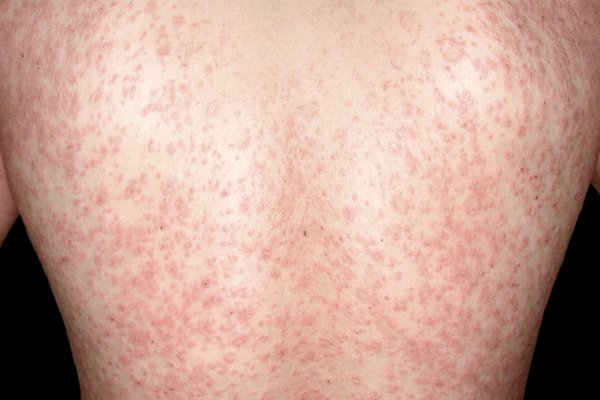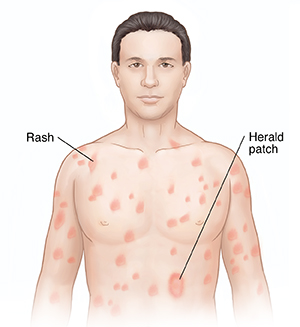
- What is pityriasis rosea?
This condition causes a rash that will clear on its own. The first sign of this rash is often a large oval patch on the skin, which is followed by many smaller patches or tiny bumps. Not all of cases have mother patch.
While more than one person in a household may have this rash at the same time and outbreaks can occur, pityriasis rosea is not thought to be contagious.

2. Some recommendations if you think you have pityriasis rosea:
– See a healthcare provider for a diagnosis. It’s important to make sure that you have pityriasis rosea. Another condition, such as ringworm and syphilis, can cause a rash that can be mistaken for pityriasis rosea. Both ringworm and syphilis require treatment to prevent worsen and long-lasting effects on your health. A board-certified dermatologist can tell you what’s causing the rash and provide treatment if needed.
– Understand that you will have pityriasis rosea for a while. The rash will clear on its own; however, this takes times. While some people see the rash go away in 6 to 8 weeks, it’s possible to have the rash for 5 months or longer.
– Make yourself comfortable while you have the rash by avoid an intensely itchy rash and relieve an itchy rash.
- Tips for managing at home:
– Try to prevent overheating. Heat can worsen the rash and the itch. To reduce the risk of overheating:
- Avoid hot temperatures whenever possible.
- Stop strenuous activities while you have the rash.
- Stay out of hot tubs and whirlpools.
– Reduce discomfort due to showers, baths, and skin care products. Hot water and strong soaps can worsen the rash and the itch. If your rash doesn’t itch, taking a hot shower or using a strong soap can trigger an itch.
To avoid this, dermatologists recommend the following while you have the rash:
- Stop applying the following to skin with a rash: Skin care products labeled “antibacterial” and ones that contain fragrance or deodorant.
- Take lukewarm (or as cool as you can tolerate) baths and showers.
- Use a gentle, fragrance-free cleanser, body wash, or soap.
- Apply a gentle, fragrance-free moisturizer to all dry skin within 3 minutes of getting out of a shower or bath.
– Protect the rash from sunburn
- Cover the rash with loose-fitting clothes.
- Seek shade whenever possible.
- Apply a gentle, fragrance-free sunscreen to all skin that clothing won’t cover, using a sunscreen with SPF 30 or higher and broad-spectrum protection.
– If you have a rash on your face that makes you feel embarrassed, use a concealer. To avoid irritating the rash, use a concealer formulated for sensitive skin.
– Treat the itch. The rash is often itchy, and sometimes severely itchy. To relieve the itch at home, you can use cool compress; apply pramoxine lotion, hydrocortisone cream, or calamine lotion to itchy skin; antihistamine pill.
4. When to contact a dermatologist?
While the rash of pityriasis rosea can often be cared for at home, you should seek medical care if the rash worsens or lasts longer than 3 months.